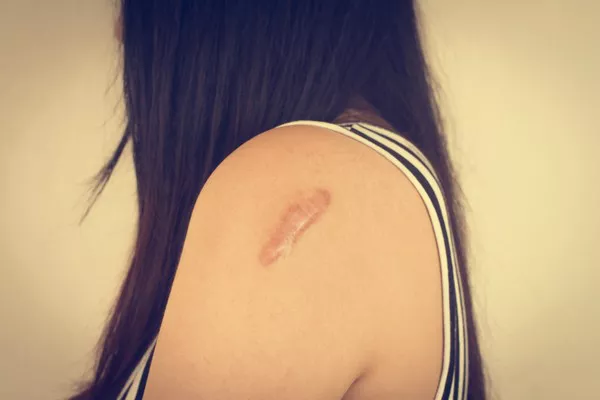Keloids are raised scars that form due to abnormal collagen production during the wound healing process. These scars can be aesthetically displeasing and cause discomfort or itching. Various treatment options are available to manage keloids, and some individuals turn to Vaseline as a potential remedy. In this article, we will explore the effectiveness of Vaseline in treating keloids and examine the scientific evidence behind its use.
Understanding Keloids and the Healing Process
Keloids develop when the body produces excess collagen during the wound healing process. Unlike normal scars, keloids extend beyond the boundaries of the original wound and can continue to grow over time. Keloids are characterized by raised, thick, and often itchy or tender scar tissue.
The Role of Moisturization in Scar Management
Proper moisturization of scars is an essential aspect of scar management. Moisturization can help keep the scar tissue hydrated, promote flexibility, and improve the overall appearance and texture of the scar. It can also help reduce itching and discomfort associated with keloids.
Benefits of Vaseline for Scar Management
Vaseline, a brand name for petroleum jelly, is a common over-the-counter moisturizer. It has been used for decades for various skincare purposes. Here are some potential benefits of Vaseline for scar management, including keloids:
Moisturization and Hydration
Vaseline acts as an occlusive barrier, sealing in moisture and preventing water loss from the skin. By keeping the keloid hydrated, Vaseline may contribute to softening and flattening the scar tissue over time. Proper hydration can also aid in the overall healing process and promote healthier-looking skin.
Protection and Barrier Function
Vaseline provides a protective barrier over the keloid, shielding it from external irritants and preventing excessive dryness. This barrier function helps maintain a suitable environment for the healing process and may reduce the risk of complications or further irritation to the scar tissue.
Scientific Evidence
The scientific evidence regarding the specific use of Vaseline for keloids is limited. However, studies on scar management in general have shown promising results for the use of petroleum jelly-based products like Vaseline.
A study published in the Journal of Wound Care examined the effects of petroleum jelly-based products on postoperative scars. The study found that participants who used the petroleum jelly-based product experienced improved scar texture, color, and overall appearance compared to those who did not use any product.
Another study published in the Journal of the European Academy of Dermatology and Venereology evaluated the effectiveness of a silicone-based gel, which has similarities to Vaseline, for the treatment of hypertrophic scars and keloids. The results demonstrated a reduction in scar thickness and improvement in symptoms in the group that used the silicone gel.
Practical Tips for Using Vaseline
If you choose to use Vaseline for keloids, consider the following tips:
Choose a Pure and High-Quality Product: Look for pure petroleum jelly without any added fragrances, dyes, or other ingredients. It is essential to choose a reputable brand to ensure product quality.
Patch Test: Before applying Vaseline to the entire keloid, conduct a patch test on a small area of skin to check for any potential allergic reactions or sensitivities.
Cleanse the Area: Cleanse the keloid area with a gentle soap and warm water to remove any dirt or debris before applying Vaseline. This will enhance its absorption and effectiveness.
Apply Regularly: Gently massage a small amount of Vaseline onto the keloid, ensuring complete coverage of the scar tissue. Repeat this process two to three times a day or as directed by your healthcare provider.
Combine with Other Treatment Modalities: Vaseline can be used as part of a comprehensive scar management plan that may include other treatment options like silicone gel sheets, corticosteroid injections, or laser therapy. Consult with a healthcare professional, such as a dermatologist, to determine the best approach for your specific keloid.
Conclusion
While the scientific evidence specifically targeting the use of Vaseline for keloids is limited, the moisturizing and protective properties of Vaseline make it a potentially beneficial addition to scar management, including keloids. Proper moisturization and hydration are important factors in promoting scar healing and reducing symptoms associated with keloids, such as itching or discomfort. Vaseline can create a protective barrier over the keloid, helping to maintain an optimal healing environment. However, it is important to approach Vaseline as part of a comprehensive scar management plan and consult with a healthcare professional for personalized advice. Individual results may vary, and a combination of treatment modalities may be necessary to achieve the best outcomes in keloid scar reduction.
[inline_related_posts title=”Related Topics” title_align=”left” style=”list” number=”3″ align=”none” ids=”454,447,457″ by=”categories” orderby=”rand” order=”DESC” hide_thumb=”no” thumb_right=”no” views=”no” date=”yes” grid_columns=”1″ post_type=”” tax=””]


































